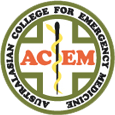The following terminology may be useful when reporting incidents into EMER:
- A patient safety incident (an ‘incident’) is an event or circumstance that could have resulted, or did result, in unnecessary harm to a patient. The use of the term ‘unnecessary’ in this definition recognizes that errors, violations, patient abuse and deliberately unsafe acts occur in healthcare and are unnecessary incidents, whereas certain forms of harm, such as an incision for a laparotomy, are necessary. The former are incidents, whereas the latter is not. Incidents are classified into a number of different types.
- An incident type is a category made up of incidents of a common nature, grouped because of shared agreed features and is a ‘parent’ natural category under which many concepts may be grouped.
- A reportable circumstance is a situation in which there was significant potential for harm, but no incident occurred, for example, a busy intensive care unit remaining grossly understaffed for an entire shift, or taking a defibrillator to an emergency and discovering it does not work, although it was not needed.
- A near miss is an incident which did not reach the patient, for example, a unit of blood being connected to the wrong patient’s IV line, but the error detected before the infusion started.
- A no harm incident is one in which an event reached a patient but no discernible harm resulted, for example, if the unit of blood was infused, but was not incompatible.
- A harmful incident (adverse event) is an incident that results in harm to a patient, for example, if the wrong unit of blood was infused, and the patient died from a haemolytic reaction.
- Harm implies impairment of structure or function of the body and/or any deleterious effect arising there from, including disease, injury, suffering, disability and death, and may be physical, social or psychological.
- Patient characteristics are selected attributes of a patient, such as patient demographics or the reason for presentation to healthcare. Attributes are qualities, properties or features of someone or something. Incident characteristics are selected attributes of an incident, e.g. care setting, treatment status, specialties involved and date of an incident.
- A contributing factor is a circumstance, action or influence (such as poor rostering or task allocation) that is thought to have played a part in the origin or development, or to increase the risk, of an incident. Contributing factors may be external (not under the control of a facility or organisation), organizational (e.g. unavailability of accepted protocols), related to a staff factor (e.g. an individual cognitive or behavioural defect, poor team work or inadequate communication) or patient-related (e.g. non-adherence). A contributing factor may be a necessary precursor of an incident and may or may not be sufficient to cause the incident.
- With reference to medication, an adverse reaction is unexpected harm arising from a justified treatment, for example, unexpected neutropenia due to a drug not known to have this effect. Recurrence of a previously encountered adverse reaction may be preventable (e.g. avoiding re-exposure of a patient with drug allergy).
- Side effect is a known effect, other than that primarily intended, related to a medicine’s pharmacological properties, such as nausea after morphine has been given to alleviate pain.
- Preventable is being accepted by the community as avoidable in the particular set of circumstances.
- Detection is an action or circumstance that results in the discovery of an incident, e.g. by noticing an error, by a monitor or alarm, by a change in patient condition or by a risk assessment. Detection mechanisms may be part of the system (such as low pressure disconnect alarm in a breathing circuit), may result from a checking process or from vigilance and ‘situation awareness’.
- Patient outcome is the impact upon a patient which is wholly or partially attributable to an incident. Where harm has occurred, the degree of harm is the severity and duration of any harm, and any treatment implications, that result from an incident.
- Organizational outcome is the impact upon an organization that is wholly or partially attributable to an incident, e.g. adverse publicity or additional use of resources
- Actions taken to reduce risk are actions taken to reduce, manage or control any future harm, or probability of harm, associated with an incident. Such actions can affect incidents, contributing factors, detection, mitigating factors or ameliorating actions, and can be pro-active or reactive. Pro-active actions may be identified by techniques such as failure mode and effects analysis and probabilistic risk analysis, whereas reactive actions are taken in response to insights gained after incidents (e.g. root cause analysis).
- A mitigating factor is an action or circumstance that prevents or moderates the progression of an incident towards harming a patient. The mechanism by which damage may occur is already in train, but has not yet led to either any or the maximum possible harm.
- Resilience refers to the degree to which a system continuously prevents, detects, mitigates or ameliorates hazards or incidents. Resilience allows an organization to ‘bounce back’ to its original ability to provide core functions as soon as possible after incurring damage.
- An error is a failure to carry out a planned action as intended or application of an incorrect plan. Errors may manifest by doing the wrong thing (commission) or by failing to do the right thing (omission), at either the planning or execution phase. Thus, if screening for bowel cancer involves regular testing for occult blood, then a screening colonoscopy in the absence of prior occult blood testing comprises an error of commission (the application of an incorrect plan), whereas failure to arrange testing for occult blood would constitute an error of omission.
Source: Runciman W, Hibbert P, Thomson R, Van Der Schaaf T, Sherman H, Lewalle P: Towards an International Classification for Patient Safety: key concepts and terms. Int J Qual Health Care 2009, 21:18-26.


 About EMER
About EMER

